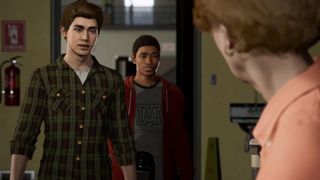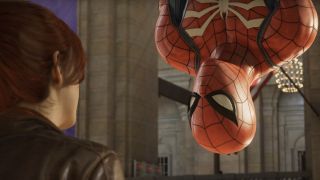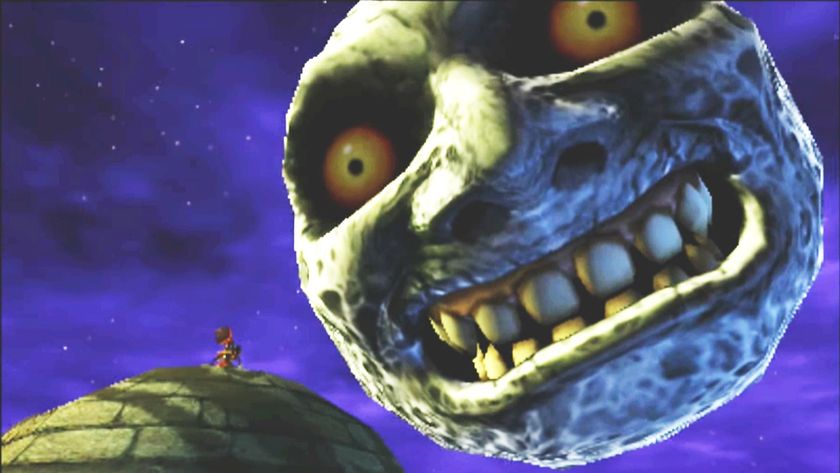What makes a great Spider-Man game? Comic experts and game creators talk about the new PS4 exclusive
Spidey Sense, Peter Parker, and the stuff Insomniac needs to nail in the new Spider-Man game

Slinging web around the skyscrapers in Manhattan and taking on the Rhino in a cage match are two of my fondest gaming memories. The slinging web might’ve given it away, but that was Spider-Man 2, a game that came out on the PS2 in 2004. Few Spider-Man titles have come close to being that great, but hopefully that will change soon.
The Insomniac developed Spider-Man is one of the most anticipated games coming out this year, and it has the potential to be a fantastic licensed adventure - something that doesn’t happen very often with games based on superheroes. But with an experienced team at the helm it’s a serious possibility, so I spoke to a few veterans of the web-slinger’s world to find out what’s needed to make the ideal Spider-Man game.
Get Spidey Sense right

Spider-Man is known for a few major powers: his web slinging, wall crawling, and Spidey Sense. Luckily we’ve already seen a fantastic portrayal of swinging through New York, “No one who loves Spider-Man 2 is gonna be able to play it for the first time again,” said William Armstrong, one of the developers on the 2007 Spider-Man 3 game. “But the other huge part of Spider-Man’s power set is the Spidey Sense.”
The Spidey Sense has been done the same way in most Spider-Man games, a single button trigger along with the bullet time feature putting the combat into slow-motion. It’s been used in dozens of games, including Red Dead Redemption and Max Payne.
“Bullet time was kinda cliche even though it was perfect within our scope,” said Jamie Fristrom, one of the original developers behind Spider-Man 2. “It’s like in the Avengers: Infinity War trailer where the hair goes up on Holland’s arm, I don’t know how you bring that feeling to a game.”
Bullet time does fit Spidey Sense well, but that doesn’t mean there isn’t a better option with modern hardware. Batman: Arkham Asylum’s detective mode would transfer well into something more action oriented for the wall crawler, “it would be like the Detective Mode in Rocksteady’s game, you can see through walls and whatnot from a stealth point a view,” Armstrong said. “It’s basically eyes in the back of your head so you can know what’s coming before it actually does.”
Playing as Peter Parker needs to be fun

Peter Parker is a huge part of the Spider-Man story and yet he’s never been a big part of the games. “It's a huge piece that the games have never done well,” Armstrong says. “If you’re going to all the trouble of making a living, breathing Manhattan you should be able to walk through it at the ground floor and experience it.”
Sign up to the 12DOVE Newsletter
Weekly digests, tales from the communities you love, and more
Any convincing story will need to include the Parker side of the web-slinger, including his life as a nerdy loner high schooler who's trying to make things work. “Playing as Peter Parker would be awesome but it needs to have a flexible narrative, more than just quick side missions,” said Fristrom.”
Playing as Parker could give a break from the exploration and combat we’ve seen from most open world games, and instead focus on a unique part of Spider-Man’s story. That could include stealth missions where Parker needs to avoid being identified as Spider-Man, (or trying to play it cool with Mary Jane) or something far more narrative-focused where your choices actively effect the outcome of the plot.
“It needs to feel grounded enough that you care about making money and you care about exploring - and that's hard to do as only Spider-Man,” Armstrong said. “If he’s not stopping a crime, what is he doing?”
Stick with a serialized story

Most previous Spider-Man titles have gone in one of two directions: they’ve either focused on one specific event that’s been stretched out to fit a full game or they’ve created a big open world and set you free to wander. Neither of those structures had the full potential that a more serialized, comic book form would have.
“It doesn’t really make sense to go with a big storyline over the course of the game, no one remembers that,” said Armstrong. “Let the serialized nature of the medium influence how the game progresses.”
The comic storylines should always be used as inspiration to get things off the ground, but things should evolve past that to fit the structure of a video game with things like side quests and collectables. And according to Hassan Otsmane the founder of Strip Panel Naked, a YouTube series that analyzes the intricacies of comics, a prime series that could fit that bill would be ‘Maximum Carnage’.
“It's a massive story that had tons of action that roped in loads of the supporting cast around Spider-Man,” said Otsmane.” Carnage escapes and recruits a bunch of deadly villains to take over Manhattan, and they cause havoc.”
The series already includes a huge cast that can extend further into the Marvel universe, including characters like Black Cat and Captain America. It lays a good base to build off of, allowing for a variety of diverse villains that can mix up the action.
Get the most out of the big baddies

With that diversity in mind, the ideal Spider-Man game would have a completely different approach to how games handle villains. “Villains are never dead, never defeated in the comics,” Armstrong said. “It's always funny how you fight the Rhino once and then it's done.”
Previous titles have used most bad guys once and then never returned to them, which always felt like missed potential with an open world that needs interesting side missions. Kraven’s Last Hunt is a great example, Kraven is a hunter that thinks he kills Spider-Man and takes over as the hero. “Imagine playing a mission where you're going after Kraven and next thing you know, you're playing as Kraven donning the Spider-Man suit, and all your attacks are reassigned as his more brutal ones.”
Villains like Kraven, Carnage, and Sandman offer great opportunities for developers to introduce unique areas. Creating a zoo for Kraven or a fluid landscape for Sandman to manipulate are just a few examples with a lot of potential.
No matter which villain, the real focus needs to be on Spider-Man, and the city he’s been protecting for the last 56 years. An open world needs to reflect the hero that saves it, “the New York of Marvel is just full of every other superhero and the city gets attacked by some weirdo in a costume every four minutes,” said Armstrong. “Capturing that feeling is difficult but worth it.”
Aron Garst is a journalist and writer exploring the future of games and interactivity. Follow him on X at @GarstProduction.
Most Popular








